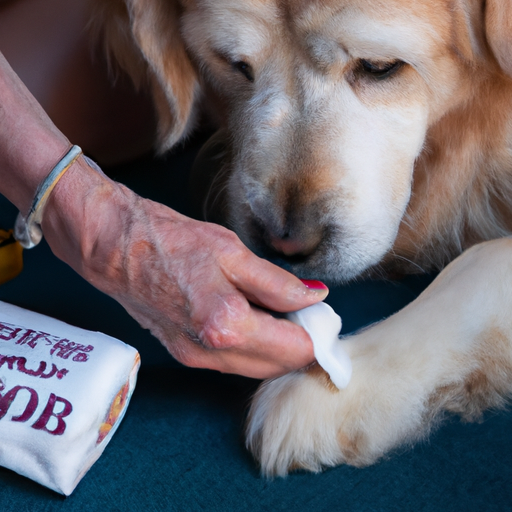As a caregiver to your furry friend, one of the most nerve-wracking experiences you might encounter is seeing them with a cut or wound. The sight of your dog in any discomfort can be distressing, especially if you’re unsure how to help. This comprehensive guide will equip you with the knowledge on how to clean cuts on dogs effectively and safely.
Key Takeaways:
- The importance of cleaning cuts on dogs promptly and properly
- Steps to clean cuts on dogs
- When to seek professional help
- Preventive measures to avoid injuries in dogs
Table of Contents:
- Why Cleaning Cuts on Dogs is Important
- Steps to Clean Cuts on Dogs
- When to Seek Professional Help
- Preventive Measures
- FAQs
Why Cleaning Cuts on Dogs is Important
Just as with humans, dogs can also get cuts and scrapes from various situations – be it from rough play, accidents, or even from their adventurous escapades. It’s crucial to clean these wounds promptly to prevent infection, and accelerate the healing process.
Steps to Clean Cuts on Dogs
Step 1: Calm Your Dog
Before you start, ensure that your dog is calm. This might be challenging, especially if your dog is in discomfort, but try comforting your pet, perhaps with a soothing voice or gentle petting.
Step 2: Gather Your Supplies
You’ll need the following supplies to clean your dog’s cut effectively:
- Warm water
- Mild dish soap
- Clean towels or cloths
- Hydrogen peroxide (3%)
- Antibacterial ointment
- A dog cone or equivalent
Step 3: Clean the Wound
Begin by gently washing the area around the wound with warm water and mild dish soap. This helps to remove any dirt or debris that might cause an infection. Rinse thoroughly to ensure no soap is left on the skin.
Next, dab a clean cloth into the hydrogen peroxide and gently apply it to the cut. Hydrogen peroxide helps to kill bacteria that can lead to infection. However, be sure to use it sparingly, as it can also slow the healing process if overused.
Once the wound is clean, apply a thin layer of antibacterial ointment to the cut.
Step 4: Prevent Licking
It’s important to stop your dog from licking the wound, as this can delay healing and lead to infection. Use a dog cone or a similar device to prevent your dog from reaching the wound.
Step 5: Monitor the Healing Process
Keep a close eye on the wound over the next few days. If you notice any signs of infection such as increased redness, swelling, pus, or if your dog seems overly distressed, seek veterinary care immediately.
Know more about wound care for dogs here.
When to Seek Professional Help
While minor cuts and scrapes can often be managed at home, it’s crucial to recognize when professional help is needed. If the wound is deep, if you’re unable to clean it thoroughly, or if your dog is showing signs of distress, seek immediate veterinary care. Additionally, if the wound doesn’t seem to be healing or is getting worse, it’s time to consult a professional.
For more information on when to seek help, visit this page.
Preventive Measures
Prevention is always better than cure. While it’s impossible to prevent all injuries, there are several steps you can take to reduce the risk:
- Regularly check your yard for any potential hazards.
- Keep your dog’s nails trimmed.
- Supervise playtime, especially with new toys or other dogs.
For more tips on keeping your dog safe, click here.
FAQs
How often should I clean my dog’s cut?
Clean the wound at least once a day until it’s completely healed. However, if the wound becomes dirty, clean it immediately.
Can I use human medicine on my dog?
Some human medicines can be harmful to dogs. Always consult with a vet before applying any medications not specifically designed for dogs.
How can I tell if my dog’s cut is infected?
Signs of infection include increased redness, swelling, pus, and distress in your dog. If you notice these signs, seek veterinary care immediately.
Should I bandage my dog’s cut?
Bandages can help protect the wound, but they should be applied properly to avoid causing more harm. If you’re unsure, consult with a vet.
In conclusion, knowing how to clean cuts on dogs is a vital skill for every dog caregiver. With prompt and proper care, your furry friend will be back on their paws in no time.
For more comprehensive guides on caring for your dog, visit American Kennel Club.



